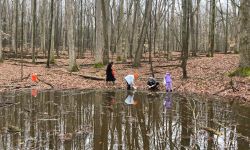Northern Michigan studio belonging to iconic artist listed for sale
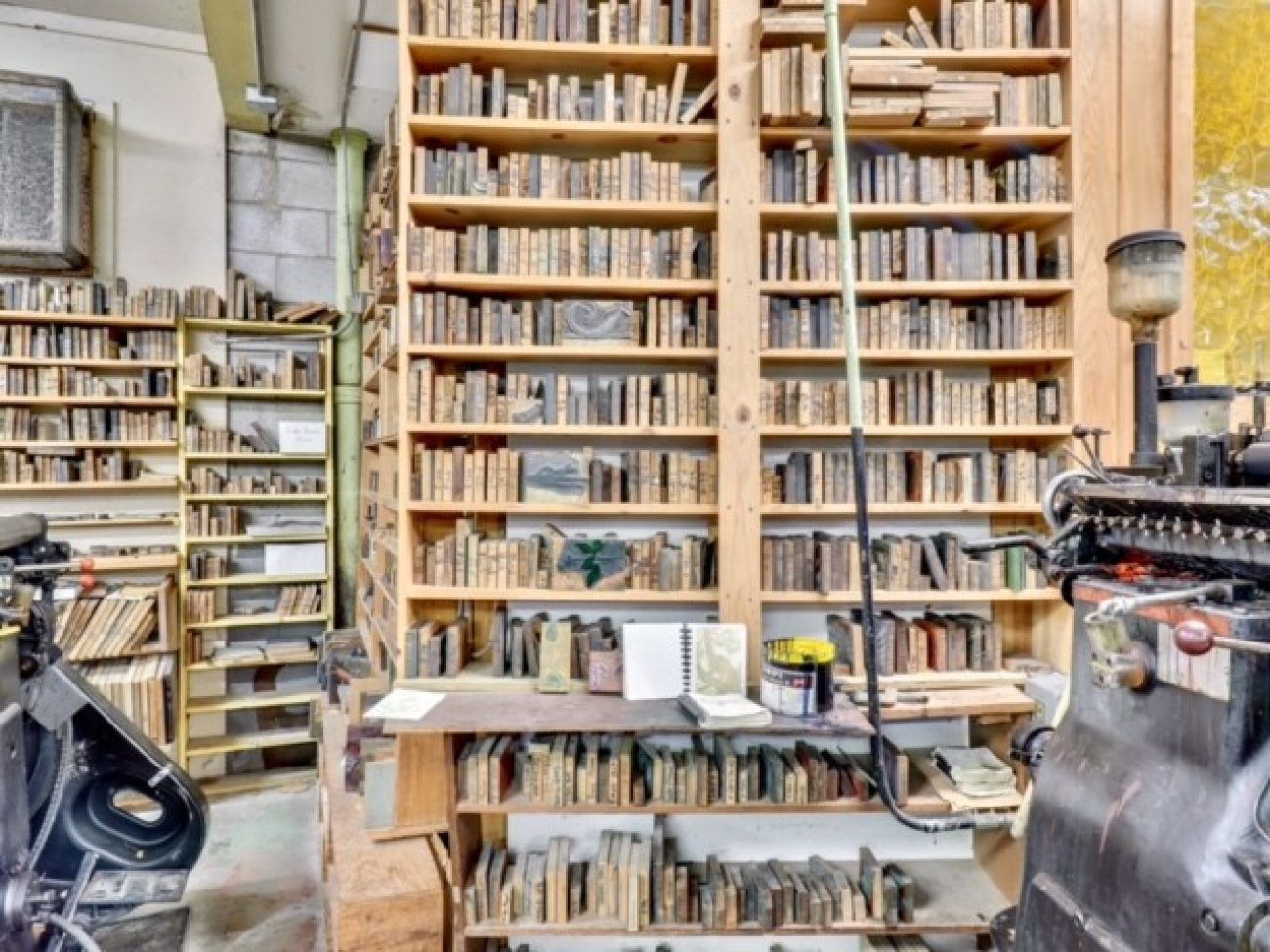
Before Gwen Frostic created a printing business that sent her stationery all over the world, she bought hundreds of acres in northwest Michigan’s Benzie County where she could observe and sketch nature.
The late artist moved there in the early 1960s, designing a grassy-roofed studio between Frankfort and Benzonia that became a tourist destination for tens of thousands of visitors per year and cemented her reputation as one of the nation’s leading nature artists.
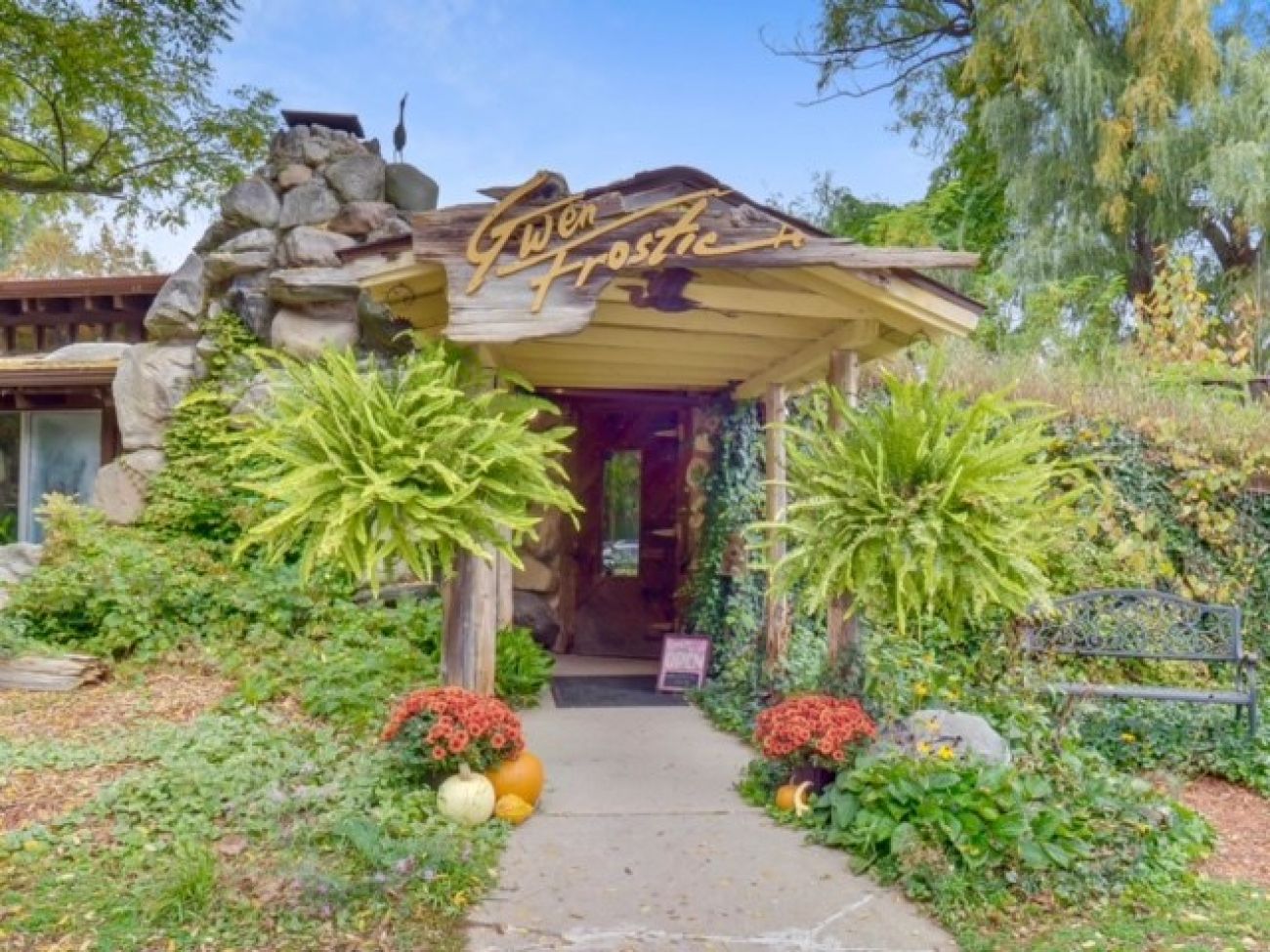
Now that studio — a full, 21,000-square-foot production facility, retail center and warehouse for Presscraft Papers, as well as her former residence — is for sale.
But the listing is for more than the real estate on 12 acres: The $1.9 million price also includes the 2,200 linoleum blocks and 15 Heidelberg presses that turned Frostic’s designs of raccoons, fawns, cardinals and flowers into some of the most recognizable Michigan-based art.
Related:
- As Latinos grow in Grand Rapids, financial program boosts their businesses
- How Upper Peninsula’s Stormy Kromer, and an iconic cap, thrived amid COVID
- Michigan Ladder Co. thrived for 120 years. Then the pandemic struck.
The buyer will acquire an iconic piece of northern Michigan, said Michelle Barefoot, marketing director at the Benzie County Chamber of Commerce. The property was added to the National Registry of Historic Places in 2021.
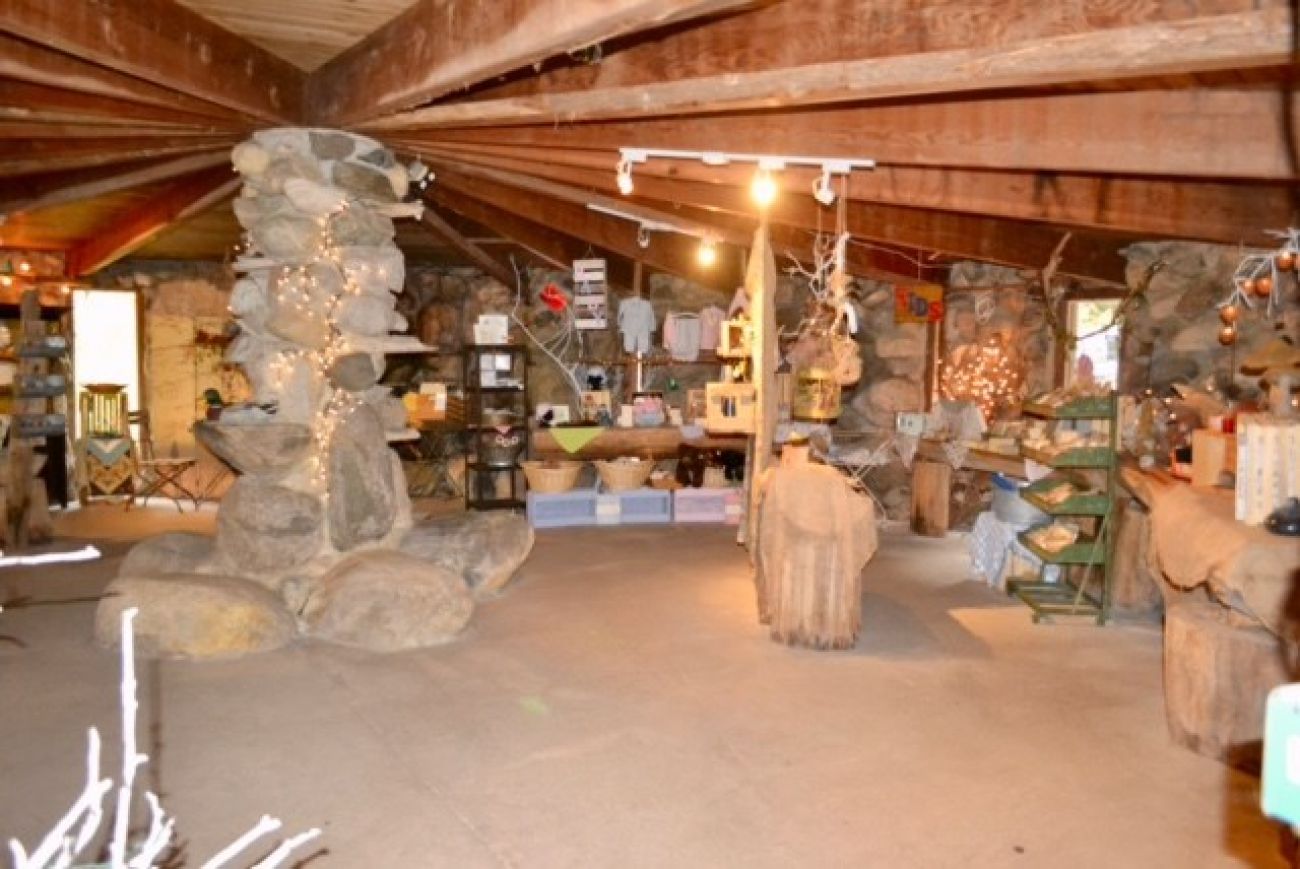
“It’s important to the area, and important to our tourism,” she said. “People who came here years ago now bring their families here, the second and third generations.”
The area, just south of Crystal Lake and close to the shoreline dunes along Lake Michigan, once held vast forests, the small towns of Frankfort and Benzonia, and some summer camps.
But like much of this region of northern Michigan, it’s now in demand for seasonal homes due to year-round tourism, thanks to its reputation for water recreation and winter sports. One nearby Crystal Lake home is priced at $1.5 million, a sign of the prosperity touching the community. It’s also about 36 miles from Traverse City.
But the area also retains much of the natural beauty that Frostic found decades ago on her property, said the artist’s friend and neighbor, Wes Blizzard.
“Her goal was to live in harmony with nature,” Blizzard said. “And she did that.”
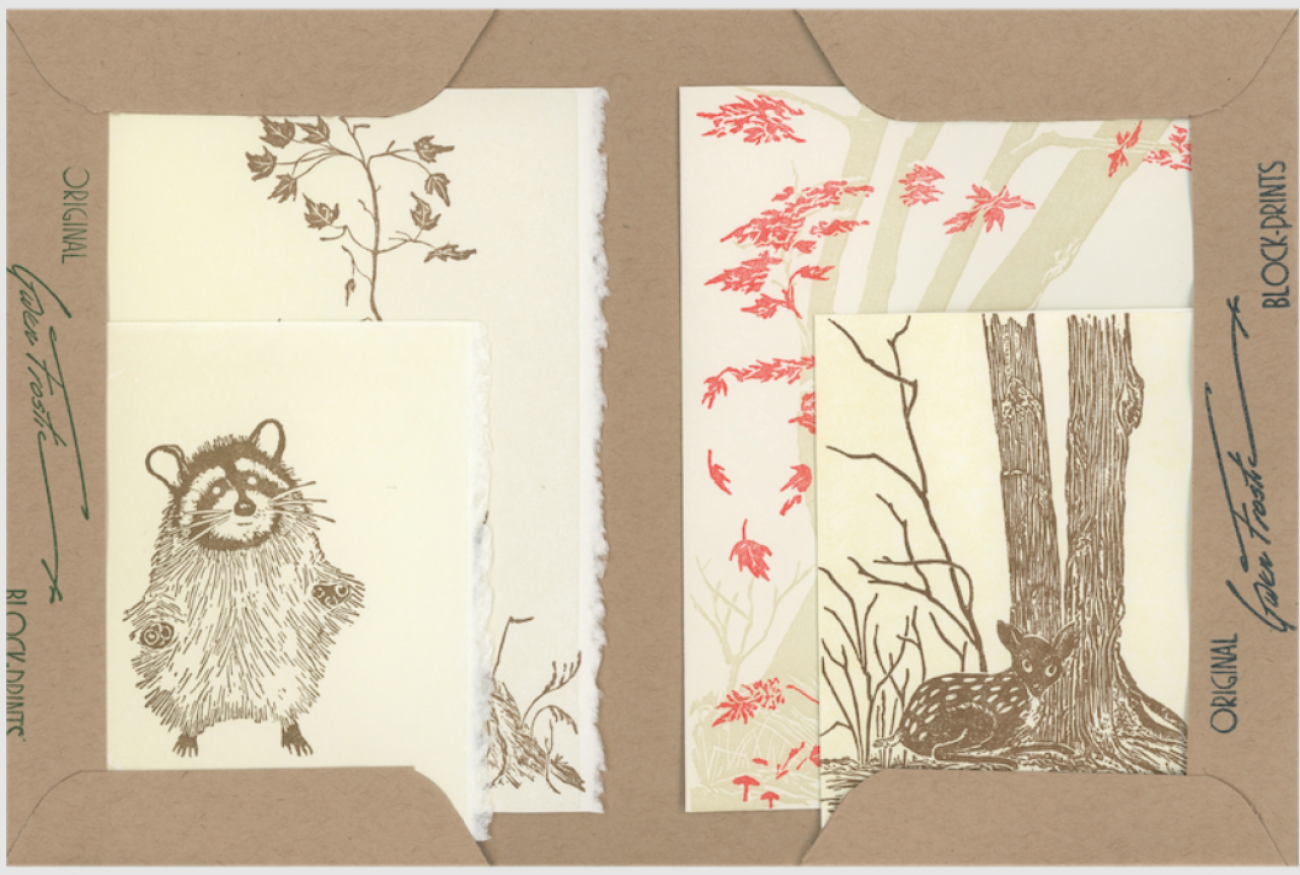
Frostic was born in 1906 in tiny Sandusky in Michigan’s Thumb region. After a childhood illness, she walked with a limp, lost some strength in her hands and spoke with a lisp, according to an article written in 2018 when a children’s book about her, “Nature’s Friend: The Gwen Frostic Story,” was published.
The book, by Lindsey McDivitt, tracks Frostic’s early drawing, done to strengthen her hands. She turned to cutting linoleum to make block prints, which — along with her love for nature — turned into the foundation for her linocut print business and long-standing regard in the art world.
Frostic opened the studio at 5140 River Road in Benzonia in 1964 when she was in her 50s. She studied art at Eastern Michigan University and Western Michigan University, and perfected her design skills — while learning about business — while working at the Willow Run bomber plant in Ypsilanti Township, where Henry Ford set up an assembly line during World War II.

After she died in 2001 at the age of 94, she left a $13 million estate to WMU, which named its art school after her. And new owners took over her business, which employed up to 20 people. But a lender foreclosed in 2010, raising concerns across the region about the future of the studio and Frostic’s legacy there.
Employee Kim Forshee was able to buy it and keep it operating in person and online with her husband, Greg. They now are planning to sell it as they prepare to retire, listing agent Diane Ives said of the couple, who were not available for an interview.
“They’re proud of the work they’ve done, but ready to pass the torch,” Ives said.
The property went on the market in October, said Ives, broker and owner at United Country Great Lakes Realty & Auction in Atlanta, Michigan.
Many people who contact her are envisioning what they could do with the history, the art and the lasting affection for Frostic’s work.
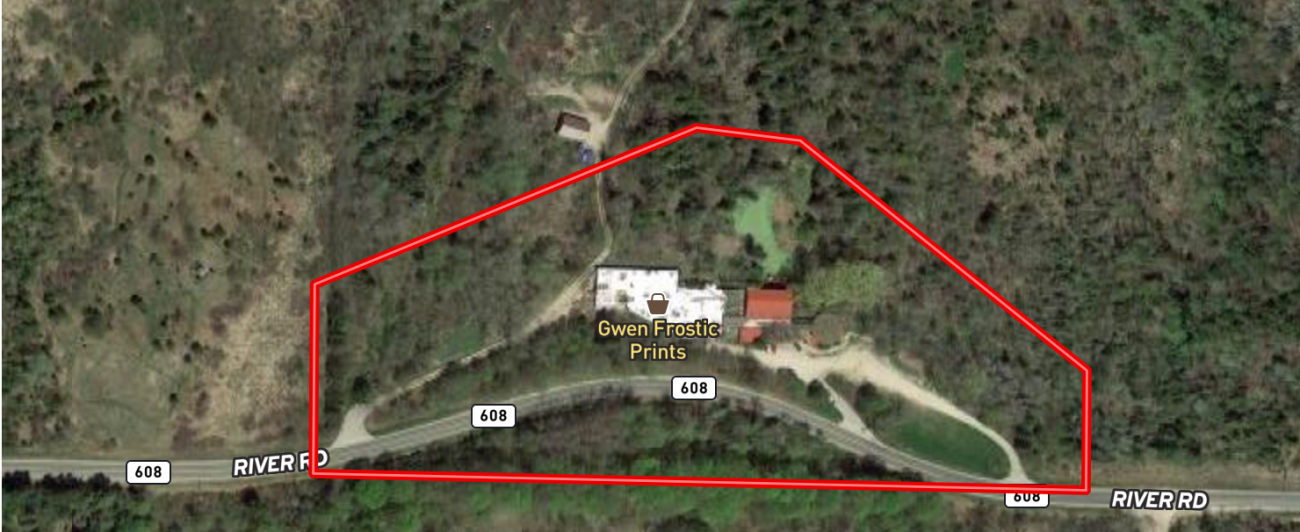
“I’m getting calls from people who say it could be a dream come true if they could make it work,” Ives said.
Many, she added, “have so many stories to tell” about Frostic. One man used to attend a camp in Frankfort and recalled making field trips to the studio. A woman told Ives that she used to visit the shop with her grandmother, the pair enjoying the art.
One day, the woman told Ives, she watched Frostic come out of the shop area and her grandmother rushed over to talk to her.
“She knew it was a huge thing in her grandmother’s life,” Ives said. “It’s so amazing to hear these stories.”
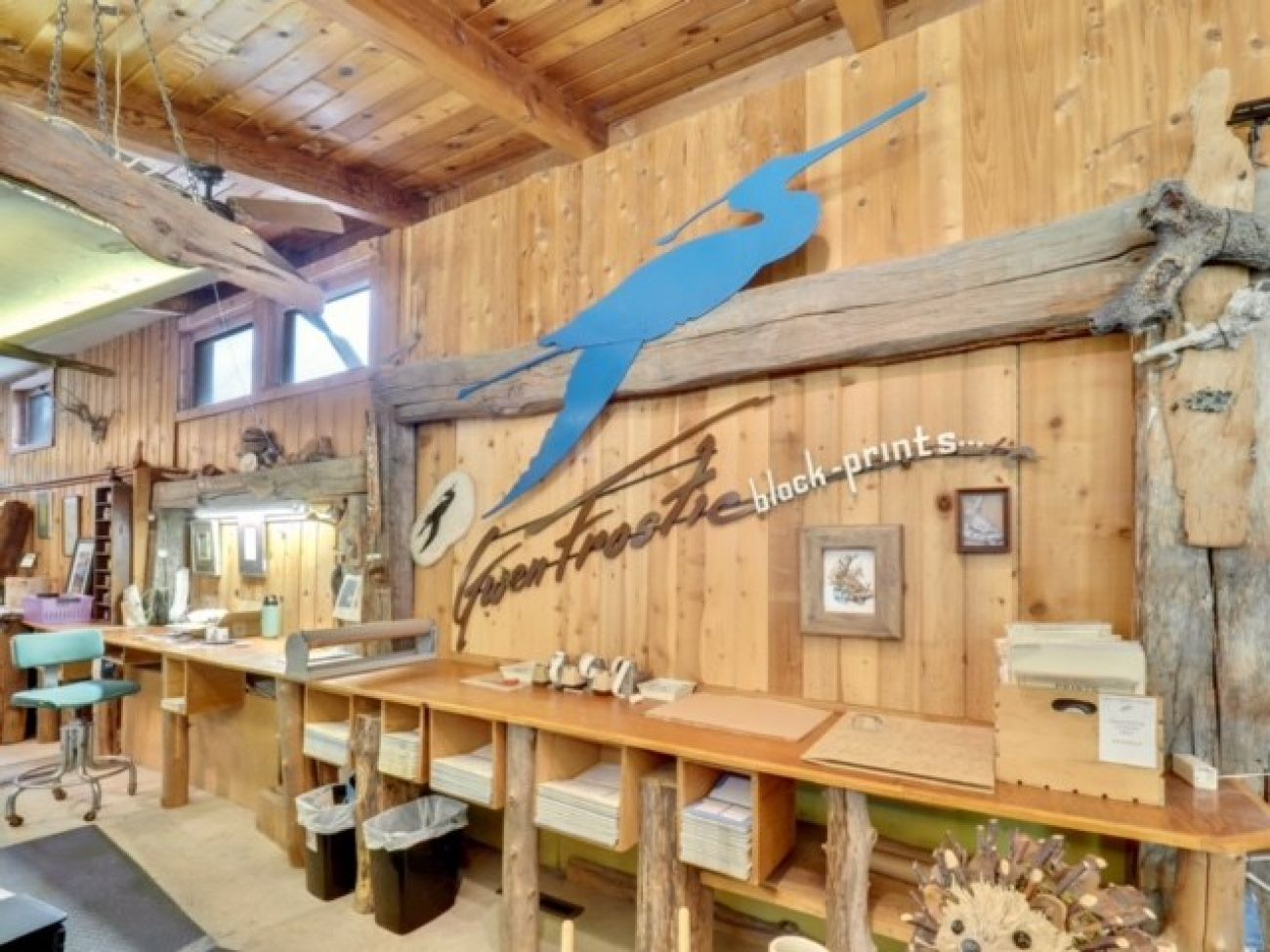
Blizzard also has many stories to tell about Frostic, whom he met when he and his wife, Sharon, worked at nearby Camp Lookout. He was a high school art teacher who stayed in touch with Frostic as he and his family visited the area every summer, and she ended up selling the couple about 50 acres of land across from the studio where they built their home.
He recalls Frostic seeking harmony with nature, and said that’s reflected in her design for the studio, which was built over a stream with wood and stone. The business celebrated that harmony, but also added a vitality to the area, Blizzard said.
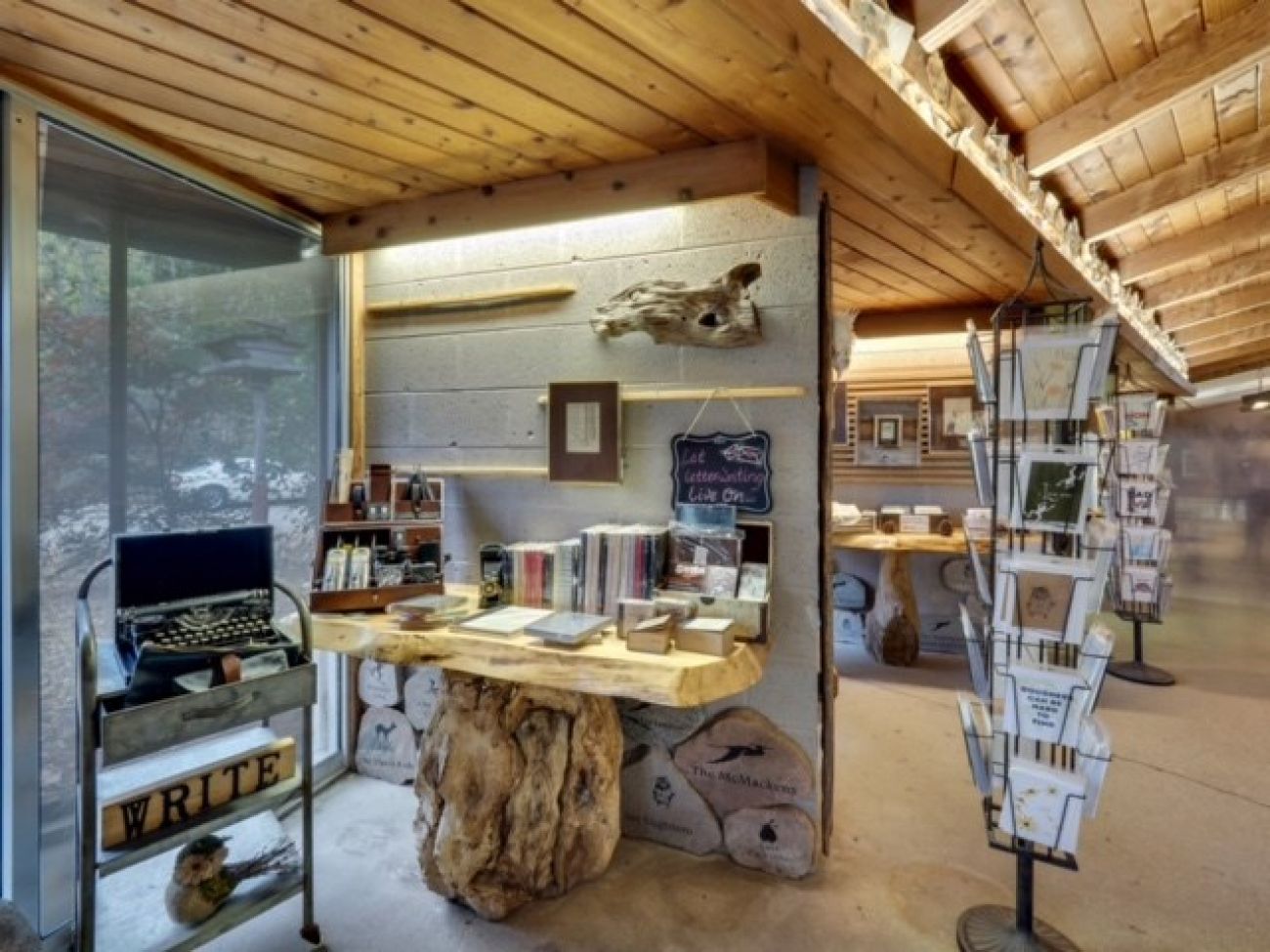
“There was a big parking lot for all of the employees, and when the presses were all running, it was an amazing place,” Blizzard recalls.
Frostic told an interviewer in 1985 that blending business with art was natural for her, since she was creating in both realms.
“I love business,” she said. “I love business just as much as doing artwork.”
While the property is “a special place to a lot of people,” Ives said, the asking price was set based on appraisals of the operating business and the art. The property itself could use some upgrades, including a new roof on a section of the building. The area where Frostic once lived has been gutted, and its renovation remains undone.
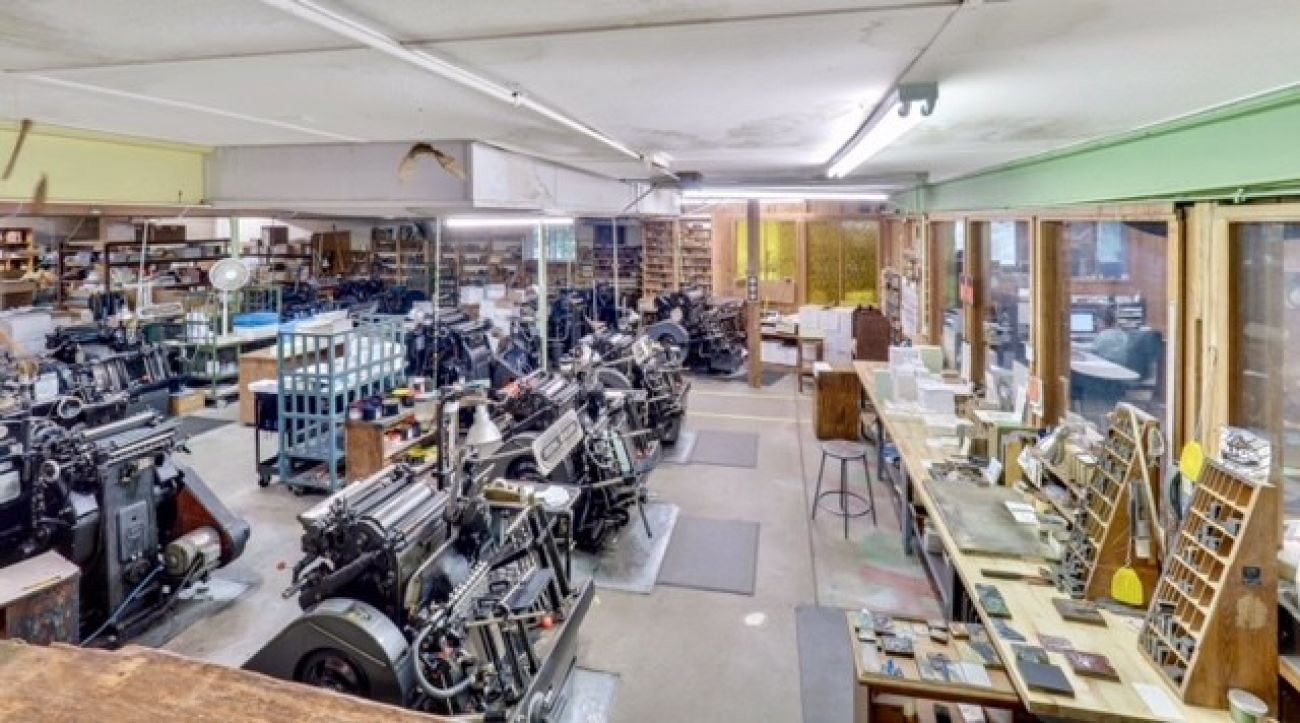
Blizzard said he wonders if the property could end up as studio space for student artists, possibly part of a nonprofit, as well as an outlet for Frostic merchandise. Frostic’s legacy of creativity mixed with today’s emerging talent “could be a drawing card,” he said.
“She was an amazing person,” Blizzard said. “I think a lot of people caught their enthusiasm for the arts through her.”
Business Watch
Covering the intersection of business and policy, and informing Michigan employers and workers on the long road back from coronavirus.
- About Business Watch
- Subscribe
- Share tips and questions with Bridge Business Editor Paula Gardner
Thanks to our Business Watch sponsors.
Support Bridge's nonprofit civic journalism. Donate today.
See what new members are saying about why they donated to Bridge Michigan:
- “In order for this information to be accurate and unbiased it must be underwritten by its readers, not by special interests.” - Larry S.
- “Not many other media sources report on the topics Bridge does.” - Susan B.
- “Your journalism is outstanding and rare these days.” - Mark S.
If you want to ensure the future of nonpartisan, nonprofit Michigan journalism, please become a member today. You, too, will be asked why you donated and maybe we'll feature your quote next time!




